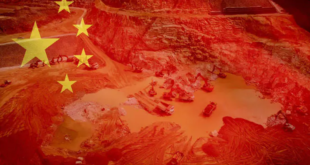Surprise developments in protracted conflicts are rarely an overnight success. Nor do they happen in isolation or involve only the parties in the dispute. With regard to the India Pakistan deal on the Kashmir ceasefire, surely there were other actors at work, and more than one issue at play. It is no coincidence that the China-India disengagement, the new Joe Biden administration in the United States (US), domestic problems in both India and Pakistan and the Kashmir deal happened at about the same time.
In terms of the timing, perhaps, the change of administration in the US provided the prime impetus, though that alone cannot be the main reason for the deal. Both India and Pakistan have been anticipating a change of guard in the US with hope and anxiety. Pakistan was hoping for a reset in its bilateral relations, while India was naturally concerned if President Biden would continue to maintain the Donald Trump administration’s extraordinary relations with India. Besides, both Biden and US Vice-President Kamala Harris had expressed concerns about the human rights violations in Kashmir adding to India’s anxiety.
Indian Prime Minister Narendra Modi’s domestic troubles and Pakistan’s internal dynamics principally, the ascendant role of the army, may have also been at play. The army has an outsized role in foreign and security polices in Pakistan, and is also seen as the power behind the throne. However, this time around, the army would like to avoid any blame for the growing public disappointment with Imran Khan’s government. Hence, it may have decided that the prime minister needs to be given some space to develop the economy for which the perception of a peaceful neighbourhood is important. And nothing would be more credible than having the Army Chief, Qamar Javed Bajwa, announcing the change in Pakistan’s national security priorities. He may have, in fact, orchestrated the deal through back channel negotiations. Yes, the agreement is good for the Kashmiris on both sides of the Line of Control (LoC) but that was not the sole reason for the accord.
The critical push for the deal was probably provided by China’s concerns about Biden’s China policy. As suggested by Sushant Singh in his piece in Foreign Policy, India may have solicited China’s help in getting Pakistan on board for the LoC deal as its price for disengagement with China in the eastern Ladakh border.
Between India and Pakistan, India is the more likely instigator of the deal as its need was greater. This would “legitimise” India’s actions in Kashmir and improve its standing with Washington. Pakistan fell in line thinking that this ceasefire agreement could raise its credibility in Washington with respect to its call for peace in Afghanistan and also help it start on a better footing with Biden when the two sides start talking about US-Pakistan cooperation. Peace on the LoC also raises the hope of long-term normalisation between the two countries and improves investor confidence in Pakistan. And who knows – Modi may have promised help with the Financial Action Task Force (FATF). All this well explains Bajwa’s remarks, “It’s time to extend hand of peace in all directions.”
While Pakistan’s gains remain uncertain, India’s objectives appear to have been achieved. Washington has signalled a continuation of close Indo-US ties and a hands-off policy on Kashmir. “When it comes to the US role, we continue to support direct dialogue between India and Pakistan on Kashmir and other issues of concern,” said the US State Department Spokesman. Kashmir has been referred to by the spokesman as a Union Territory. Most importantly, the deal and the US response sends a message to Kashmiris to stop looking for help towards Islamabad or the international community, and to find modus vivendi with India. It would help the Indian government in convincing the world that relations with Pakistan were “improving” and it should not get involved. Meanwhile India has bought time to find an internal “solution” to the problem. Kashmiris have been disappointed. Syed Ali Geelani has said the deal “does not reflect the interests of the Kashmiri people”.
The bottom line is that by his 5 August 2019 action, Modi has put the Kashmir dispute beyond Pakistan’s reach. Constraints of the FATF, struggling economy, Afghanistan and an eagerness to normalise relations with Washington may have provided Islamabad an alibi for not helping the Kashmiris – something which it is handicapped or unwilling to do anyway. So why not open up to India a little and reap some benefit? As C Raja Mohan posited in his piece in The Indian Express, India had outplayed Pakistan in securing the international community’s tacit support for the 5 August 2019 action.
Has Pakistan abandoned Kashmir? Not yet! Bajwa’s move seems to be as much tactical as that of India, except that it may be a strategic gain for India and a loss for Kashmiris, if not for Pakistan.
What comes next? There has been ceasefire in the past but no peace. Will the deal lead to a broader dialogue? The reality is, whether or not India and Pakistan talk, the result is the same. What is needed is a paradigm shift in both countries in the way they relate to each other. Whether Kashmir is a core issue or not, it is certainly a core obstacle to peace.
 Eurasia Press & News
Eurasia Press & News



